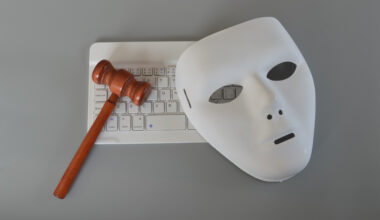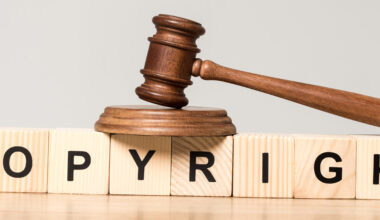The dispute
The dispute in hand arose between the Polish Folk Artists Association and a leader on the confectionary market, Wawel SA. The Polish Folk Artists Association is a collecting society that currently comprises more than 2,000 artists in various fields and regions of Poland. The Association’s aim is not only to popularise folkloristic art and literature, but also to manage and protect copyright or related rights entrusted to it. The Association became a collecting society in 1995 on the basis of a permit issued by the Minister of Culture and National Heritage. In 2007 Wawel SA used designs inspired by folkloristic art in its advertising campaign for chocolates, on chocolate wrappers. These included motifs of cut-outs (animals, flowers, plants and geometrical forms). One of the members of the Polish Folk Artists Association recognised its own cut-outs on some of Wawel’s wrappers. As a consequence the Polish Folk Artists Association intervened and used its rights under the Polish Copyright Act (PCA) to protect its members’ rights.
In the lawsuit against Wawel SA, the Association demanded information and access to documents which were in the possession of Wawel SA that were necessary to determine remuneration and fees claimed. The Association demanded to be informed about what works of folkloristic artists (folk art) and whose works had been used as originals or derivative works in wrapping designs and advertising materials in Wawel’s business activity, and in what quantity and in relation to what products, over the last 10 years. In parallel to the above, the Association also demanded that Wawel cease the infringement and redress the effects of the infringement, but it also sought damages, requested publication of a relevant press declaration, etc. In addition to the above, the Association sought particular damages.[1] In the defendant’s opinion, that demand was too broad. Wawel did not know what works the demand concerned and it found that the demand could not be enforced. In addition Wawel stressed that the agreement signed with the artist providing the wrapper designs expressly stated that no third-party rights were infringed.
Subsequent court rulings
The Court of First Instance as well as the Court of Appeals rejected the Association’s claims. One of the main reasons for doing so was that in its demand the Association did not state specific works or specific artists whose rights were infringed. What is also interesting is that these courts found that the Association was a business entity and therefore all rules applicable to business entities (both procedural and those arising from substantive law) should be applied to the dispute. In this case, this meant that the procedure for commercial cases, with all its requirements, should be applied. What’s more, the claims brought by the association were subject to the statute of limitations applicable to cases connected with commercial activity, i.e. a three-year limitation period. Having said that, both courts found that the Association did not meet the requirements specific for commercial cases and that its claim was too late. The Association did not agree with the stance adopted by the courts of both instances and brought a final appeal before the Supreme Court on the grounds of infringement of both procedural and substantive law. In its judgment the Supreme Court disagreed with the views adopted by the courts of first and second instance and specified a different solution for the case. In general, the Supreme Court agreed with the appellant’s (i.e. the Association’s) standpoint with respect to the issue of application of rules for commercial proceedings,[2] as well as the issue of the period of time after which claims connected with economic activity[3] become time-barred under the statute of limitations.
In that regard, the court stressed that according to art.104(1) of the PCA, collecting societies are associations that comprise authors, artistic performers, producers or radio and television broadcasting organisations whose statutory objective is the collective management and protection of copyright or related rights entrusted to them, and the exercise of the powers under the PCA. The activities of such an organisation require a permit from the relevant minister (art.104(2) of the PCA). The same permit defines the scope of rights within the fields of exploitation covered by collective management and protection. The Supreme Court recalled that the mere fact that an entity is an association does not mean that this copyright association cannot meet criteria making it an undertaking conducting economic activity. In fact such an association can provide exploitation and copyright management services in exchange for remuneration. The court also recalled a ruling handed down by an EU court stating that an association of artists cannot only be considered as an undertaking, but also an undertaking which can abuse its dominant position.[4] The Supreme Court emphasised that this also results from judgments of Polish courts issued in relation to the Polish Competition Act, that a collecting society can be considered as an undertaking, if that entity provides services to artists and entities that exercise economic copyright for which the society obtains remuneration.[5] The Supreme Court noted that under the Polish Competition Act not all agreements concluded by a CS will be considered as proof of business activity. Agreements concluded with artists where they define the scope of use of works by third parties, for instance, should not be perceived as evidencing a prerequisite for commercial activity. Nevertheless those agreements which aim at commercialisation of works of artists fall within that scope.
The Supreme Court also found that a CS may conduct two types of activity—its statutory activity and business activity. Such business activity conducted in accordance with the Polish Act on Business Activity as well as the Polish Act on the National Court Registry enables a CS to be considered to be an undertaking. Despite the above, the Supreme Court stated that this is not grounds for concluding that a case regarding claims relating to the protection of economic rights should be considered as a commercial case within the meaning of the Polish Civil Procedure Code (PCPC). What is fundamental in that respect is that the claimant (the Association) represents rights of artists. Claims derived from these rights do not fall within the scope of commercial cases. The management itself does not deprive these claims from being attached to copyright. The Supreme Court said that it is not the characteristics of the entity seeking protection before the court that decide the nature of the case, but the nature of the right itself.
The Supreme Court stated also that the CS must demonstrate the existence of an obligation of the defendant to pay royalties and the infringement of such an obligation under PCA in not seeking the licence from the respective CS. There is no reason to believe that the procedural obligation to prove in court (file evidences) is exhausted for a CS in its statutory presumption of representation and the necessity of the requested information and documents, since the concept of “necessity” includes also the right to claim royalties. The right to claim information is subsidiary to the right to claim royalties and should ensure achievement of the latter. Therefore both of the said rights function under the same contractual relationship. The final important aspect of the judgment regarded the Association’s demand for the submission of information. The Supreme Court stated that—as a rule—the Association should determine which works protected under copyright fall within the scope its representation. Given, however, the specific nature of copyright, the complex ways in which they can be infringed and the legal nature of the claim for access to information and documents, it may turn out that the CS will not be able to determine the specific works the defendant has used in its business. That circumstance is, however, for the court itself to establish. The Supreme Court stated that despite the fact that the Association’s demand for submission of information was very broad and imprecise, the court could not automatically refuse protection under art.105(2) of the PCA on that basis, without determining the specific facts of the case, as that refusal could lead to an actual denial of protection of copyright. Given the above, the Supreme Court referred the case back to the lower instance for further ruling.
Commentary
Statute of limitation
Collecting societies are becoming increasingly active in copyright claim recovery. In addition, artists are also becoming more aware of their rights. The statute of limitations is certainly a factor that defines the reach of a given claim. In the case of claims connected with protection of copyright brought by collecting societies two time-limits were taken into consideration, which were 3 and 10 years. According to the general rule set forth in art.118 of the Polish Civil Code, the time-limit for bringing civil claims is 10 years. In cases of claims related to commercial activity and services performed from time to time, the statute of limitations is reduced to three years. Specific (shorter) periods of limitation are also provided for by the law for some contracts. One can therefore say that if no specific rules are found, the general rule has to be applied.
The Polish Copyright Act does not provide for any specific rule regarding claims covered by that Act. Therefore general rules regarding limitation periods will apply in copyright cases. The issue of the statute of limitations applicable to actions brought by collecting societies has been discussed by Polish legal academia and has also been analysed by the courts. According to some authors, in cases where claims arising from the PCA are brought by artists, a 10-year limitation period should be applied. In cases, however, where claims are brought by an entity functioning based on the Act on Business Activity (i.e. a publisher), the three-year limitation period should be applied.[6] According to that approach the criterion of conducting business activity by the entity bringing the claim is decisive. A different approach emphasises that it is not only the nature of the entity bringing the claim, but, in addition, the type of claim pursued by that entity[7] that needs to be assessed. A different view was adopted by the Court of Appeals in Warsaw.[8] That court found that the Association which claimed payment of royalties (the Polish Filmmakers Association) could not be regarded as a business entity. The court was of the opinion that the Association’s statutory activity within the limits in which it was acting as claimant in the case could not be regarded as proof of conduct of business activity. For this reason, the Court of Appeals found that the claim brought by the Polish Filmmakers Association should be subject to a 10-year limitation period. In turn the approach taken by the Supreme Court in the case was different. In fact, that court stressed that the characteristics of the entity seeking protection before the court were not decisive. The court looked deeper and found that the nature of the right itself should be taken into account while analysing whether a claim is connected with commercial activity within the meaning of art.118 of the PCC. The commercial nature of the case was also an important factor, as depending on whether a case was commercial or not, a given court was bound to apply a specific procedure. Commercial procedure rules in Poland used to be stricter up to 2012. This applied in particular to the obligation of parties to present all evidence relevant to the case in the first pleading. Further evidence was accepted by courts only if the party was not able to present it earlier, and within no more than two weeks from the moment when new evidence became available to the party. In the case discussed in this article, despite the fact that the Court of Appeals applied commercial procedure rules, the Supreme Court found that the parties’ rights were not infringed in that respect. The solution adopted by the Supreme Court with regard to the statute of limitations emphasises that in a dispute regarding the infringement of economic rights, a CS represents artists and the fact that it is entrusted with a task (a statutory one) by these artists does prevent a case from remaining ordinary and not of a commercial nature. The Supreme Court divided a CS’s activities into those of a business entity, under some laws (e.g. the Act on the National Court Registry, the Competition Act, etc.) and activities that are not commercial in nature. The question remains whether this division is justifiable, as, by definition, an association represents the interests of its members, i.e. artists. The representation of these interests consists sometimes in commercialising their works and sometimes in protecting of their economic rights. The question that can therefore be raised is whether these two mentioned fields of activity should not be considered as simply constituting two sides of one activity performed by a collecting society. This assumption will raise again the question of whether the nature of the entity bringing the claim should be decisive when assessing whether a claim is connected with commercial activity or not. Having said that, and taking into account the different views appearing in the literature and in court judgments, it is likely that the issue of the statute of limitations applicable to claims brought by collecting societies will be subject to further discussion.
Submission of information and access to documents
The other issue that was tackled by the Supreme Court in the judgment at hand was the scope of the information and documents that can be demanded by collecting societies and the procedural obligation to prove within the limit of statutory presumption of representation under PCA art.105(1).Article 105(2) of the PCA authorizes collecting societies to demand information and access to documents necessary to determine remuneration and fees claimed. Article 105(1) contains two factual presumptions which are essential for performing the tasks entrusted to the CS: the presumption of representation in respect to the right entrusted to the CS in its permit and the presumption of legitimacy enabling the CS to make submissions in court in the name of its artists. The said demand under art.105(2) PCA can be filed before a statement of claim or it can be filed at the same time as the statement of claim. In that respect that right can be compared with interim injunctions. In practice the court first rules upon the demand, and later on the claim itself. As mentioned above, in its demand brought under art.105(2) of the PCA, the Association asked whose works, what works, in what quantity and in relation to what products these works were used by the defendant. This demand was very broad. In the case, the Supreme Court tried to strike a balance between requirements provided for the statement of claim in general (art.187(1)(1) of the PCPC) and the rights granted to collecting societies based on art.105(1)(2) of the PCA. However, the court’s findings raise some doubts. As correctly stated by the Supreme Court, according to art.187(1)(1) of the PCPC in a statement of claim the claimant must precisely define its claim and present facts allowing the defendant to identify the subject-matter of the dispute. Thus, in a copyright case, a claimant has to determine specifically the object of its claim, for example the rights that are infringed. Normally that implies that an artist who brings a claim seeking protection against infringement of economic rights should specify which works the case relates to. The Supreme Court also stated that it is not enough for a CS to invoke the permit on the basis of which it operates, instead of defining the works that are being protected. What was very important for the court was that the refusal to grant the claimant the protection covered by art.105(2) of the PCA cannot lead to actual refusal of protection of copyright. It seems, however, that accepting that the mere generic indication of the economic rights managed by the claimant cannot be deduced from the right granted based on art.105(2) of the PCA. That would lead to the non-observance of the criterion of “necessity” of information. It could turn out that the claimant could have access to information that goes far beyond what is actually the object of its claim. The Supreme Court’s judgment lacks a deeper examination of that important issue. One could think that the court accepts a demand which refers to broadly defined economic rights managed by the CS and finds that the claimant can specify the exact works to which the claim relates at a later stage. It is doubtful whether, without knowing the precise object of a claim, one can prove that the documents and information requested under art.105(2) of the PCA are necessary. That article allows a CS to demand submission of information and access to documents necessary to determine remuneration and fees claimed. The wording of that article seems to imply that the essence of that claim must be first defined since—according to the Supreme Court judgment—an “obligation to pay” must first be established to be able to claim information. It is quite inconceivable that this “obligation to pay” could be specified as generic or imprecise in a writ. This does not mean that the right to claim information is to be combined in one procedure with the procedure for the infringement of copyright. Filing the claim for information and documents does not mean, for example, the obligation to claim damages for infringement. This does mean, however, that there is an obligation for the CS to prove the infringement, the scope of which (amount of fees as damages) is to be established with the claimed information. This is because both claims are functioning under the same legal relationship. In practice, however, the claims for information in cases when such information is lacking will be combined in one procedure with the claims for infringement of copyright.
Conclusion
The scale of actions brought by collecting societies before the courts in Poland is increasing. The Supreme Court’s judgment, both regarding the issue of the statute of limitations, as well as the issue of demand for information and documents, widens the scope of claims that can be formulated by a CS. Thus it seems that the judgment will have an important impact on the further development of that trend.
The article was first published by European Intellectual Property Review, Issue 2/2013 p. 118-121.
* The authors wish to thank Jon Tappenden for his very valuable language assistance.
[1] It is worth mentioning that in practice, the claimant can at the same time file a demand for submission of information and access to documents under art.105 (2) of the PCA and its statement of claim. [2] Polish Civil Procedure Code (PCPC) art.479(1)–(21). [3] Polish Civil Code (PCC) art.118. [4] BRT v SABAM (127/73) [1974] E.C.R. 313; [1974] 2 C.M.L.R. 238. [5] Judgment of the Supreme Court of December 6, 2007, Case III SK 16/07; Judgment of the Supreme Court of April 2, 2009, Case III SK 19/08. [6] See J. Barta and J. Markiewicz, Prawo autorskie (Oficyna, 2010), pp.253–254. [7] See J. Bleszynski, “Prawo autorskie” in J. Barta (ed.), System Prawa Prywatnego, Vol.13 (C.H. Beck, 2007), pp.698–699 [8] Judgment of the Court of Appeals in Warsaw of September 14, 2009, Case I ACa 534/09.









